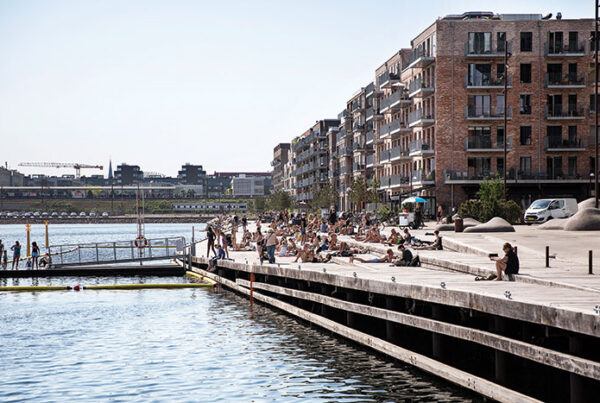With more than a half a million people experiencing homelessness on any given night, the United States needs 6.8 million more affordable housing units, according to the National Low Income Housing Coalition.
Speaking on the “Affordable Housing through Alternative Strategies” panel at the 2021 ULI Fall Meeting, Bryan Esenberg, managing deputy commissioner, Department of Housing, City of Chicago, said that there is a 120,000-affordable-unit gap just in Chicago and that at the current rate you likely cannot just build your way out of it. He said that Mayor Lori Lightfoot’s administration is considering new approaches in which they layer on what is going on with schools and other infrastructure as they try to address housing affordability.
“Let’s go deal with vacant and abandoned buildings, get acquisition and rehab[ilitation]. Let’s do some infill development and new construction,” Esenberg said. This kind of layered approach is how he sees true neighborhood economic development that also does not displace the existing population.
Given the regulatory environment and the barriers to entry, “We’re not seeing new emerging developers in this space,” said panelist Sarah Wick, vice president, Related Midwest. “It does require people with experience. We’re trying to figure out how we expand opportunities to other folks.”
Wick said that she sees sufficient capital being directed in the acquisition and preservation space. “Where we’re not figuring out affordable housing on the finance side, is in new construction space,” she said. One of her projects is the Lathrop, a 34-acre (14 ha) public housing site that has been converted into a mixed-income community.
Joshua Braun, a panelist and CEO of Kinexx Modular Construction, said that his firm focuses on modular units for urban infill, working with the city of Chicago and others to create a product that will work for their standards, where rectangular lots are fairly universal. Financiers, however, still do not understand many of the advantages of modular, he noted.
“This gentleman said, ‘We don’t have anything to put a lien on.’ But we have a whole home sitting in a warehouse, being maintained. I don’t have to worry about stuff being stolen or weather,” Braun said. “If you have to foreclose on a site-built home, it could be a partially finished site, it’s an eyesore for the community.” If the deal fell apart, the modular home could be delivered to a different site, said Braun.
Panelist Susan Tjarksen, managing director, Cushman & Wakefield, said, “Construction methodology has come light-years in the last 10 years. Of the modularly constructed homes I’ve been in, you don’t know they are modular in a very good way.” She also said that build-to-rent could be seen as a more viable solution.
Wages also are an increasingly issue, said Esenberg, making modular even more attractive. A lot of nonprofit developers were lost in the financial crisis, so there is also a capacity issue and “the cost of construction exceeds the market value in many of our neighborhoods.”
The city is also looking at cleaning up sites it owns as an equity play. “We have tons of dirt,” Esenberg said. “It’s just dirty, and but for our willingness to clean it, people don’t want to live on it and shouldn’t live on it.” The hope is that this brings down the cost to the builder, which is passed on to the end users, he noted.


